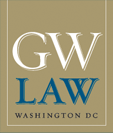Commercial Purchasing: The Chasm between the United States Government's Evolving Policy and Practice
Document Type
Book Part
Publication Date
2003
Status
Accepted
Abstract
During the 1990's, the United States government accelerated its efforts to adopt more commercial practices and buy more commercial items. In doing so, the government sought to: (1) mimic the most successful buying practices of businesses and consumers and (2) rely more heavily upon existing goods and services already produced in the marketplace (rather than demanding creation of government-unique versions). This paper introduces the government's efforts to make its purchasing regime more commercial through the introduction of new policies, vocabulary, purchasing authorities, and practices. The paper unveils a host of impediments that restrain the government from evolving into a truly commercial purchasing regime; impediments that derive from the nature of government, the specific needs of the government, and public's expectations regarding the expenditure of public funds. Ultimately, the paper suggests that the government is well served in attempting to become more commercial, but divining a happy medium - or determining just how commercial to become - is a daunting task.
GW Paper Series
GWU Law School, Public Law Research Paper No. 25
SSRN Link
http://ssrn.com/abstract=285536
Recommended Citation
Schooner, Steven L., "Commercial Purchasing: The Chasm between the United States Government's Evolving Policy and Practice" (2003). GW Law Faculty Publications & Other Works. 103.
https://scholarship.law.gwu.edu/faculty_publications/103

Comments
Conference Draft
Published as Chapter 8 (page 137) in Public Procurement: The Continuing Revolution, Sue Arrowsmith & Martin Trybus, eds. (2003).